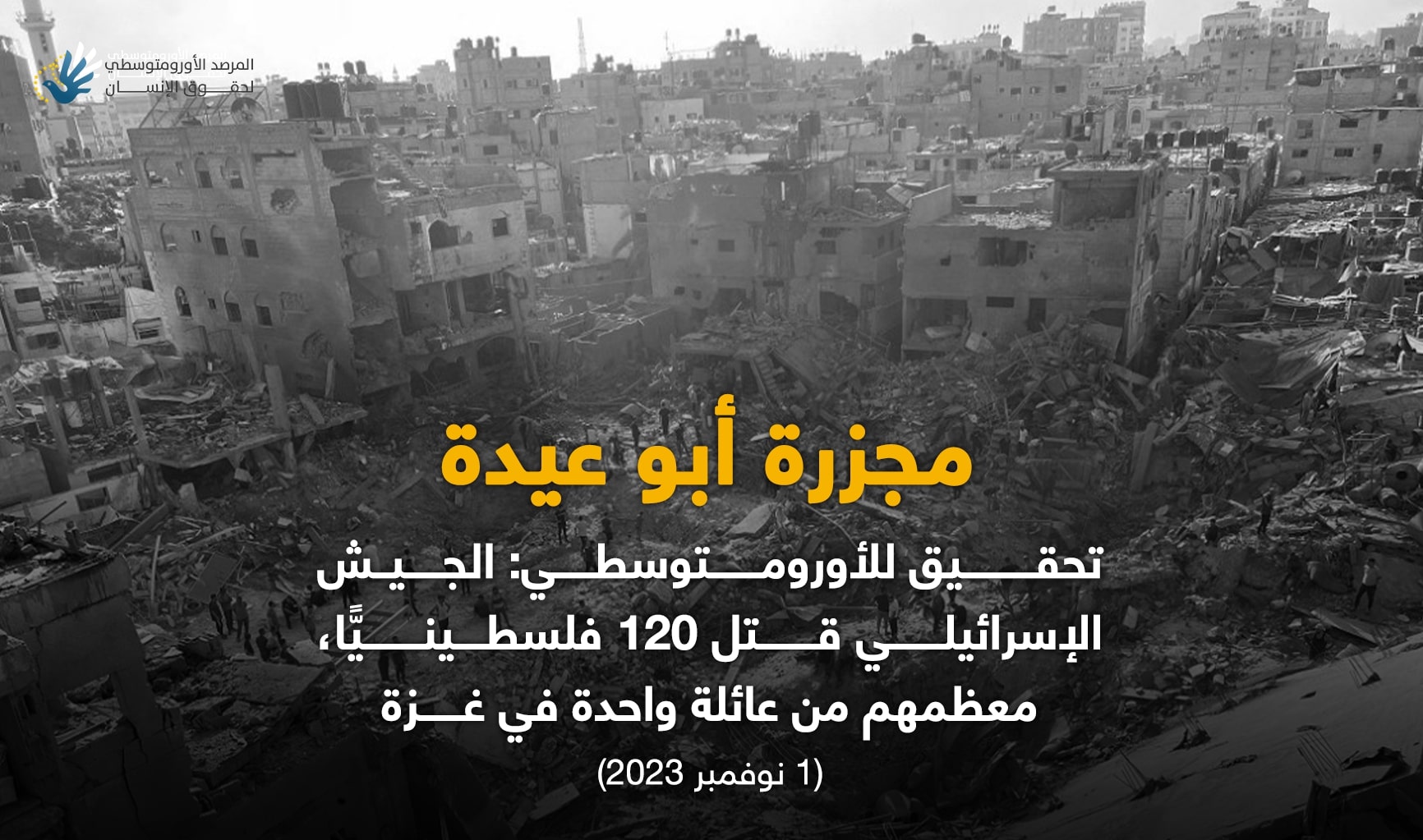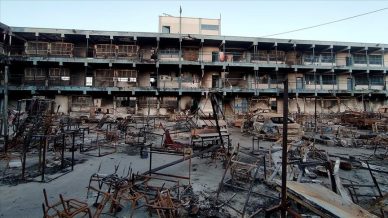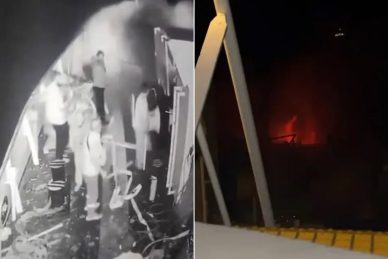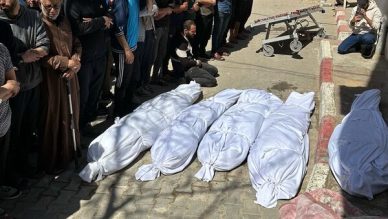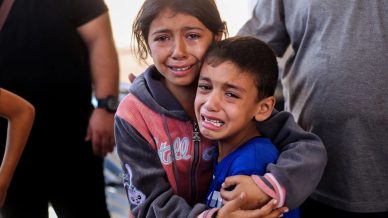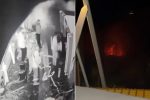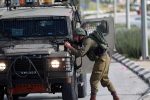GAZA, (PIC)
The Euro-Med Monitor for Human Rights published the results of an investigation into the massacre in a residential complex committed by the Israeli army in the Jabalia refugee camp in the northern Gaza Strip in November of last year, using bombs with massive destructive power.
The investigation, which lasted several months and was based on multiple field visits to the targeted site, testimonies of survivors and eyewitnesses, and satellite imagery, revealed that several Israeli air strikes targeted a residential square known as the “Abu Eida Square,” which contains residential buildings housing hundreds of civilians and displaced people, resulting in the killing of about 120 people, mostly from one family, with American-made weapons.
The Euro-Med stated that the incident that occurred on November 1, 2023 constitutes a full-fledged war crime and crime against humanity committed by the Israeli army against civilians, as part of its wide-ranging military attack against the civilian population in the Gaza Strip, which is part of the broader genocide it has been perpetrating against the Palestinians since October 7 of last year.
As part of its investigations over the past months, the Euro-Med Monitor’s field team visited the Abu Eida Square residential area in Faluja neighborhood in the Jabalia refugee camp several times to assess the massive destruction caused by the attack, and conducted interviews with eight survivor witnesses and residents who remained in the area after the majority of its residents were forced to relocate to other areas due to the widespread destruction in the area. They also analyzed video footage and photographs of the incident site at the moment of the targeting, as well as satellite images of the site before and after the targeting, showing the extent of the destruction that befell the place. The locations of the targeted, completely destroyed and severely damaged buildings were also identified.
According to the Euro-Med Monitor, based on witness interviews and other sources, the number of residents present in the area at the time it was targeted was over 500 people, the majority of whom were from the Abu Eida family. This includes the total number of residents in the area as well as displaced persons who had taken refuge there.
In the details of the investigation, around 12:30 pm, the Israeli army aircraft dropped six to eight high-explosive aerial bombs without any prior warning on the residential Abu Eida square, targeting adjacent residential buildings ranging from one to five stories high, as well as a kindergarten.
Within seconds, buildings were leveled to the ground, and other buildings suffered severe damage, causing massive destruction in the area and damage to the surrounding buildings. At least three large craters were observed, reaching a depth of around 2.5 meters, with some having a diameter of around 10 meters.
According to eyewitnesses, the targeted area contained more than 20 adjacent, simple dwellings typical of refugee camp buildings, with many structures consisting of lightweight metal sheet roofs, in addition to a single-story kindergarten building with an asbestos roof, where some of the displaced persons had sought shelter.
All eyewitnesses and survivors interviewed by the Euro-Mediterranean team reported that the bombs fell suddenly and in quick succession on several residential buildings in the area, in an Israeli army devised bombing called the fire belt, which is an intensive missile bombing that extends for about an hour, targeting a specific geographical spot and which the Israeli army has employed in various parts of the Gaza Strip since the start of its military offensive on the Strip on October 7 last year. The intensive bombing causes massive human and material losses due to the scale of the targeting on the one hand, and the inability of the residents to evacuate the entire targeted area on the other.
The Israeli army claimed that in the early hours of November 1, 2023, based on accurate intelligence information, the Israeli army’s planes struck a Hamas command and control center in Jabalia. They eliminated Hamas elements in the strike, according to its claims.
The Israeli army also claimed in the same statement that “it urged Gaza residents in this neighborhood to evacuate as part of its efforts to mitigate civilian harm. The Israeli army continues to call on all residents of northern Gaza and Gaza City to evacuate southward to a safer area.”
However, all the investigations carried out by the Euro-Med Monitor team confirm that there were no prior warnings or alerts from the Israeli army before targeting this densely populated area of displaced persons. All survivors and eyewitnesses in their testimonies and statements obtained by the Euro-Med team denied receiving any prior warnings in any way before the targeting. The team’s examination, with the consent of some residents of the area, of the phones of some residents also showed no notifications or text messages requesting their evacuation prior to the targeting, in addition to the absence of any publications warning them and asking them to evacuate the area in advance, which was also confirmed by the testimonies of the survivors and eyewitnesses.
An analysis of the video footage published by the Israeli army on November 1, 2023 and a comparison with satellite images showed a match with the targeted site in the Jabalia camp on October 31, 2023. Additionally, by reviewing the names of the victims, none of the names claimed by the Israeli army to have targeted appear. This further reinforces the doubts about the validity of the Israeli narrative.
Furthermore, all the people interviewed by the Euro-Med Monitor team denied seeing any armed elements or the occurrence of any military confrontations in the area prior to the targeting, and they all confirmed that the area contained families and displaced persons, most of whom were related to each other, and a large number of them belonged to one family.
The Euro-Med Monitor also did not find any evidence of the presence of military targets or armed elements in the vicinity of the targeted residential square during the Israeli attack. Through the field inspection of the targeted site and the review of video clips and photos of the area at the time of the targeting, it was evident that there were no military positions in the area, and it was a densely populated civilian residential area with simple, closely spaced houses and buildings.
Based on all of the above, the investigations conducted by the Euro-Mediterranean Human Rights Monitor concluded that the military attack carried out by the Israeli army on the Abu Eida square was either a direct intentional attack or an excessive indiscriminate attack, both of which are considered full-fledged war crimes under the Rome Statute. This targeting also constitutes a crime against humanity committed by the Israeli army against a group of civilians, as it was carried out within the framework of the broad and systematic military attack waged by the Israeli army against the civilian population in the Gaza Strip.

